► A more practical McLaren
► But is it a sound formula?
► Think 911 Turbo, but mid-engined
The important question to ask here is whether this is truly a new approach to GT cars or whether it’s ‘just’ another McLaren supercar draped in marketing spin. There’s no denying the concept is juicy one.
It could allow McLaren’s GT to sit separate from both supercars and the established Aston Martin and Bentley Grand Tourers, yet drawing nutrients from each pool. However, it’s also a risky ploy because like unburnt fuel in an exhaust system, there’s a very high possibility of backfiring and ending up with a slushy supercar.
So, has McLaren succeeded?
It’s not a supercar?
According to McLaren, rather insistently.

Yet the GT certainly draws quite a lot from the supercar pool, in the sense that it’s a low-slung two-seater built around a carbon chassis with a twin-turbocharged mid-mounted V8. But credit where credit is due, the GT also manages to offer 570 litres of luggage space (150 in the front, 420 above the engine).
That’s not only 200 litres more than the late 570GT but also more than the Mercedes-AMG CLA45 Shooting Brake, for example. Although it’s primarily flat luggage space for skis, golf clubs or naan bread, that’s still an impressive achievement, given that the GT has retained its low, sleek, terrain missile styling that a mid-engined car needs.
Design boss Rob Melville said ‘this would be the McLaren James Bond would drive’.
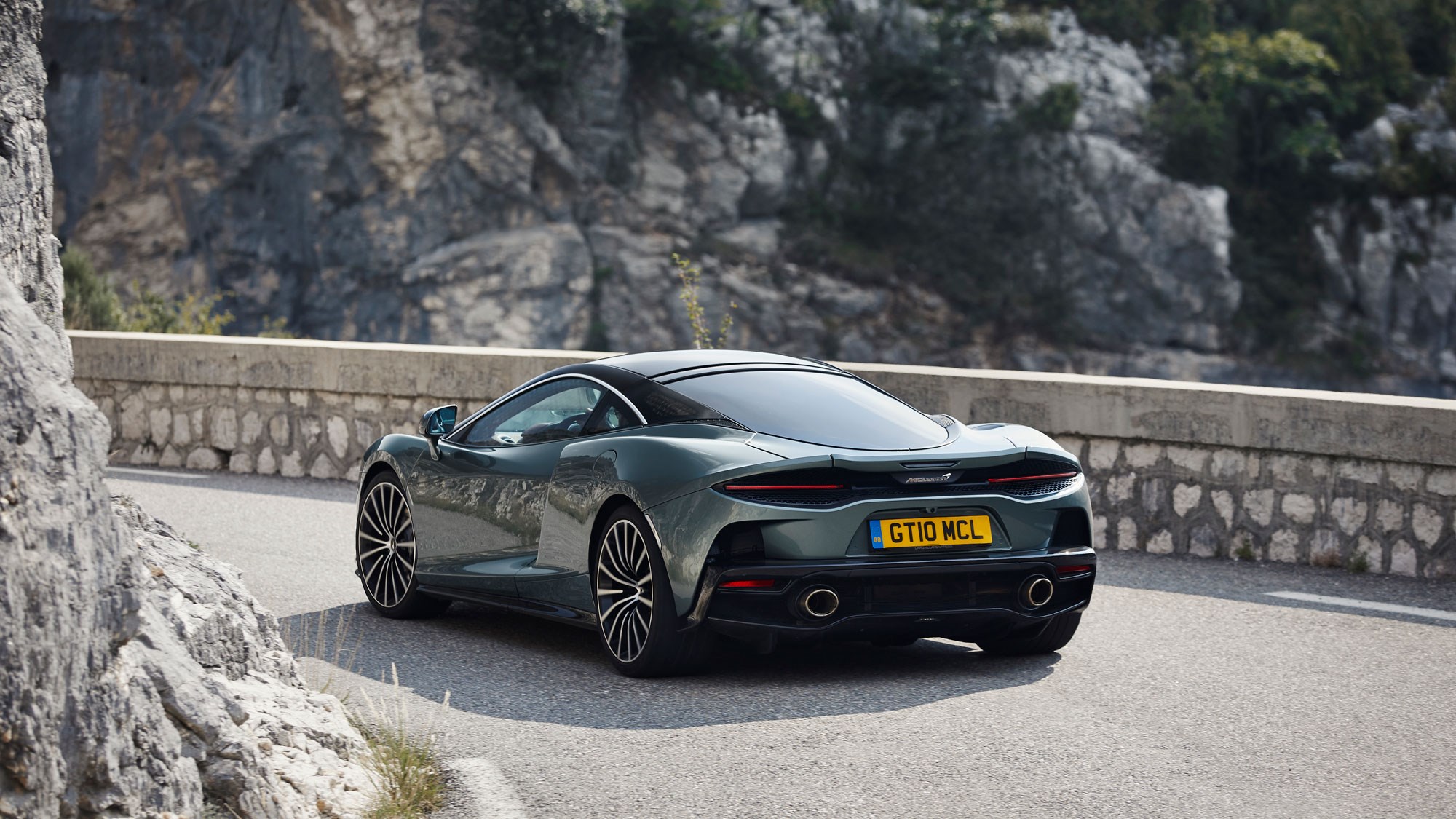
Beyond the luggage space
Inside, there’s no mistaking it’s a McLaren. There’s a wide door sill and dihedral door to get past, and once you’re in you’re sitting in a snug cabin only two microns above the ground. Initially it seems the only luxury upgrade from 720S to GT is additional leather.
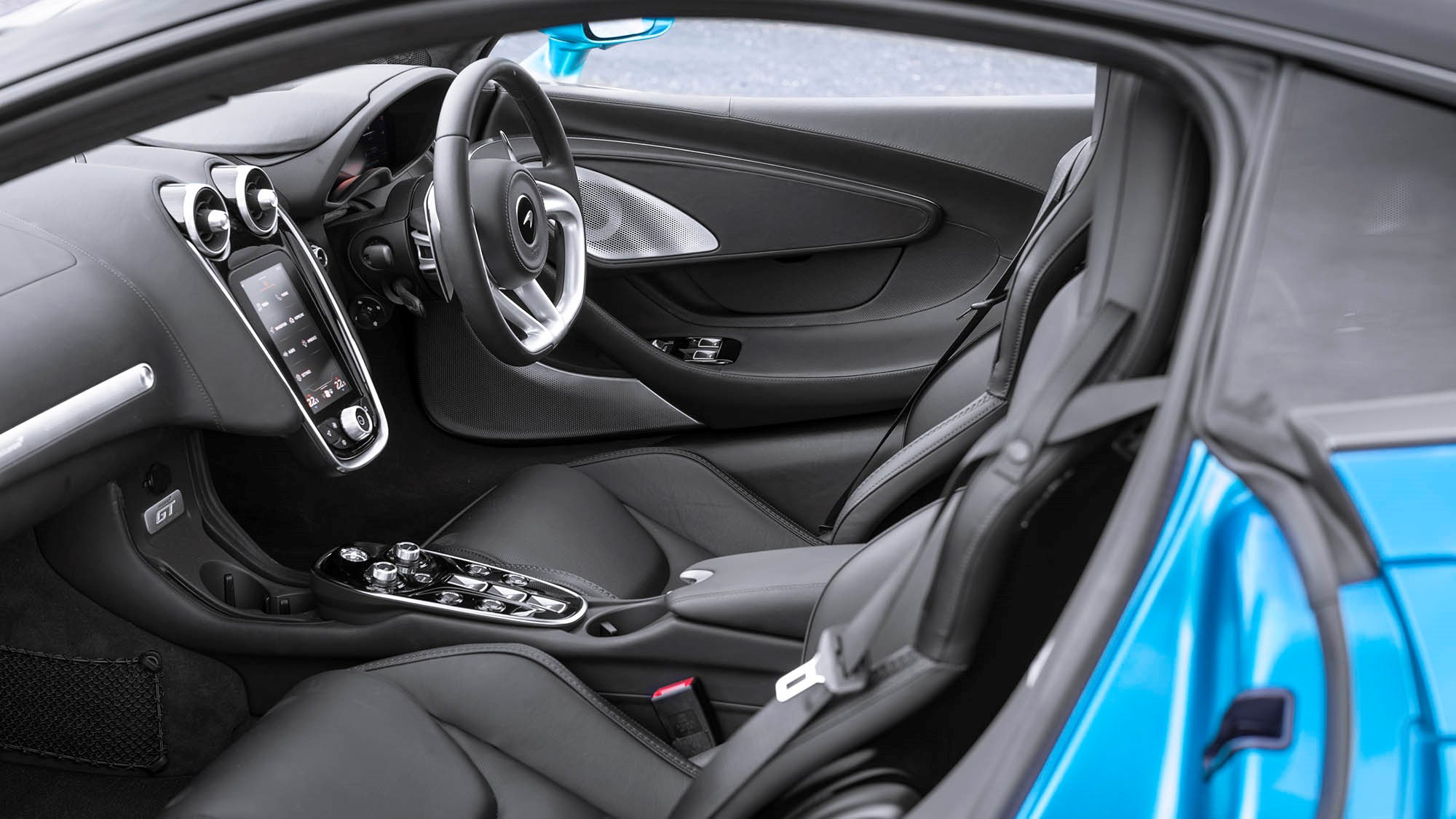
But there is memory foam in the seats to make them more comfortable, the nose has comparable ground clearance and approach angles with a Merc C-class to help navigate kerbs and speed bumps, and lastly, the engine is tuned for mid-range torque.
McLaren has paid plenty of attention to things like tyre noise, which is impressively low, and ride comfort. The GT doesn’t get the 720’s hydraulic suspension but it does get that car’s clever adaptive damping system and the ride is hugely impressive.
Does that work?
On an icy December morning, we drove the GT and the 720S at Millbrook Proving Ground. Not only was it the ideal location, it was the ideal back-to-back comparison. Millbrook’s alpine route, high-speed bowl and mile-long arrow straight showed that the GT is far less aggressive than the 720S, yet a lot more refined…and still monstrously fast.
Pounding around the high speed bowl at 100mph put that extra sound insulation and fettled ride comfort to work. There is a noticeable improvement over the 720S but the GT remains inferior to traditional GT cars. The trade-off is when you exit from the high speed bowl/motorway scenario and head into the twisty alpine route.
Compared with cars like the Bentley Continental GT or Aston DB11, the McLaren is in another league. In fact, compared to many other sports and supercars, it’s still in another league. The steering might not communicate like a 720S and there’s a bit of understeer when you really push, but the feel is excellent thanks to hydraulic steering. Therefore, the way you can glide through corners on a good road is almost balletic. Only one competitor springs to mind: the razor sharp Ferrari Roma.
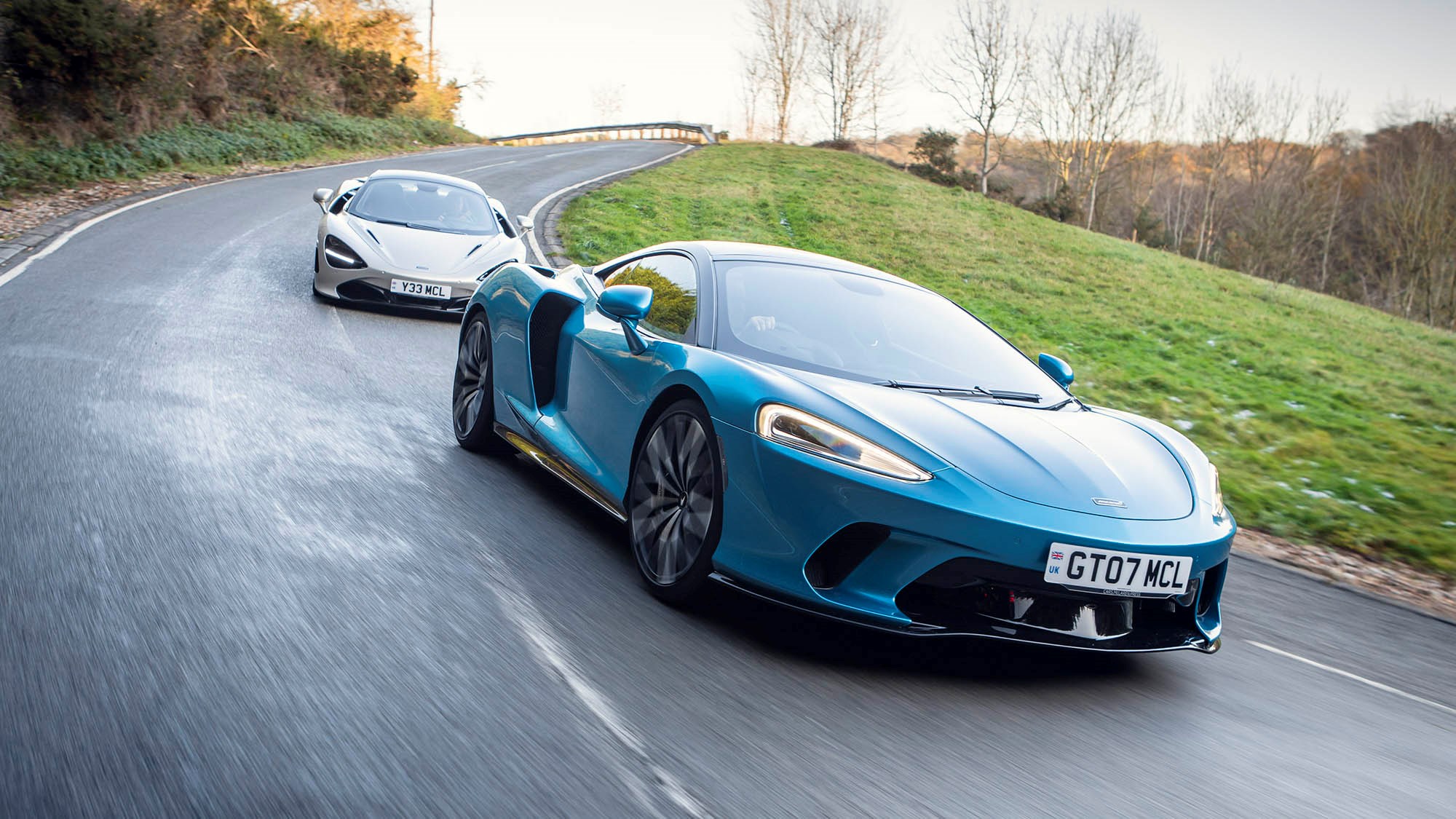
Accuse some of the GT tweaks of being soft if you wish but they work really well in the real world. Granted, the steel brakes don’t have that same solid racing car-feel underfoot, but they are easier to modulate at real road speeds. In a similar vein, progressive tyre breakaway makes slides a cinch.
Furthermore, the fat wodge of mid-range torque – preceded by a pleasant pre-turbo V8 purr – makes the GT’s power delivery very usable and accessible. And while the main luggage space sits above the engine, it stays cool (we checked it after our laps at Millbrook).
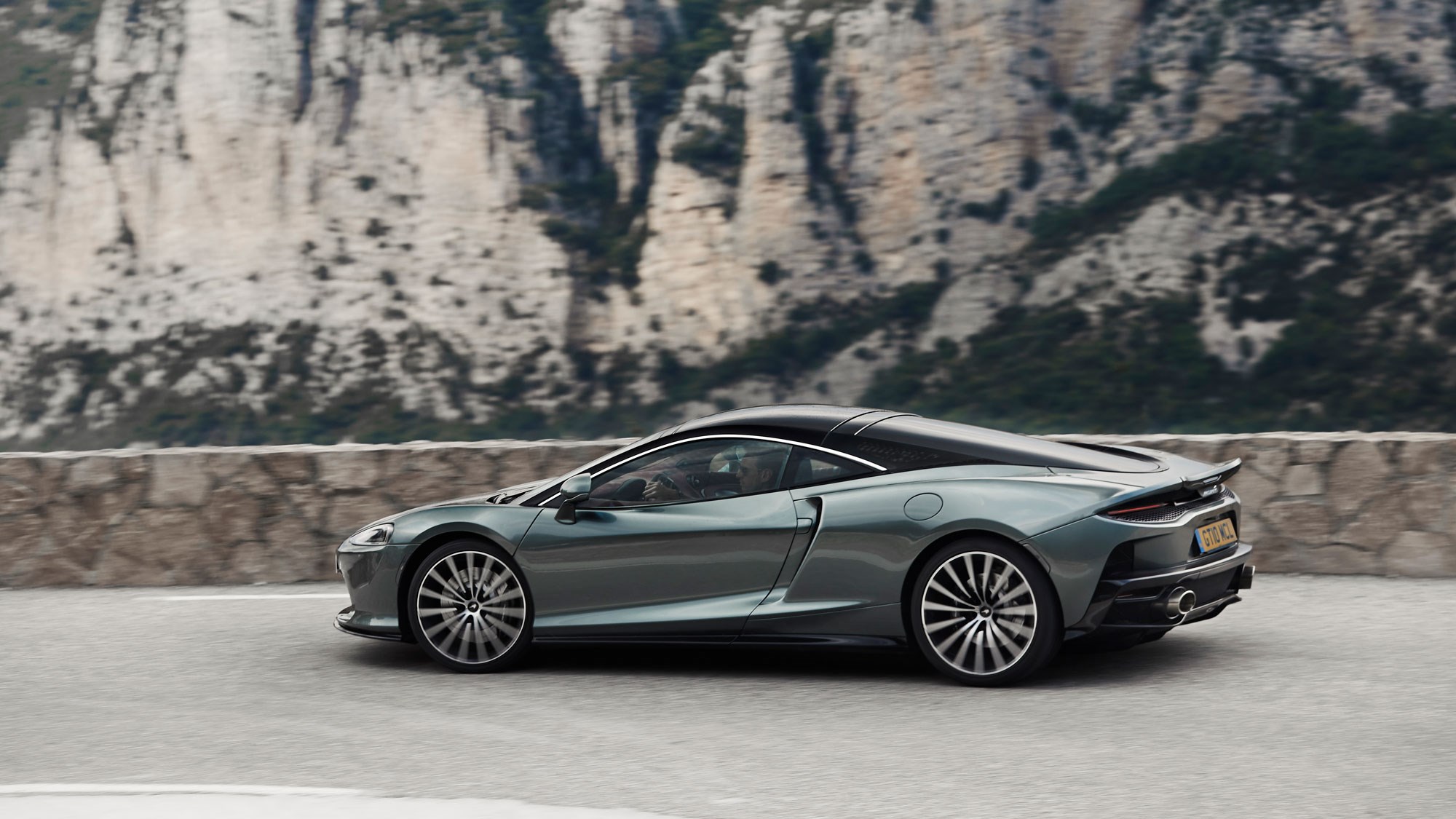
Numbers please
The GT makes 620ps, or 612bhp, from a 4.0-litre V8. That compares with 710bhp for the 720S, which shares the same 4.0-litre capacity. At 1530kg, the GT is 111kg heavier than the 720S, but almost 350kg lighter than a V12 DB11. Zero to 62mph takes 3.2sec in the GT, compared with 2.9sec in the 720S and 3.9sec for the Aston. The GT has exactly the same power output as the Ferrari Roma but is 40kg lighter and 0.2 seconds faster to 62mph.
Sounds fun. Just one thing: is it really a GT?
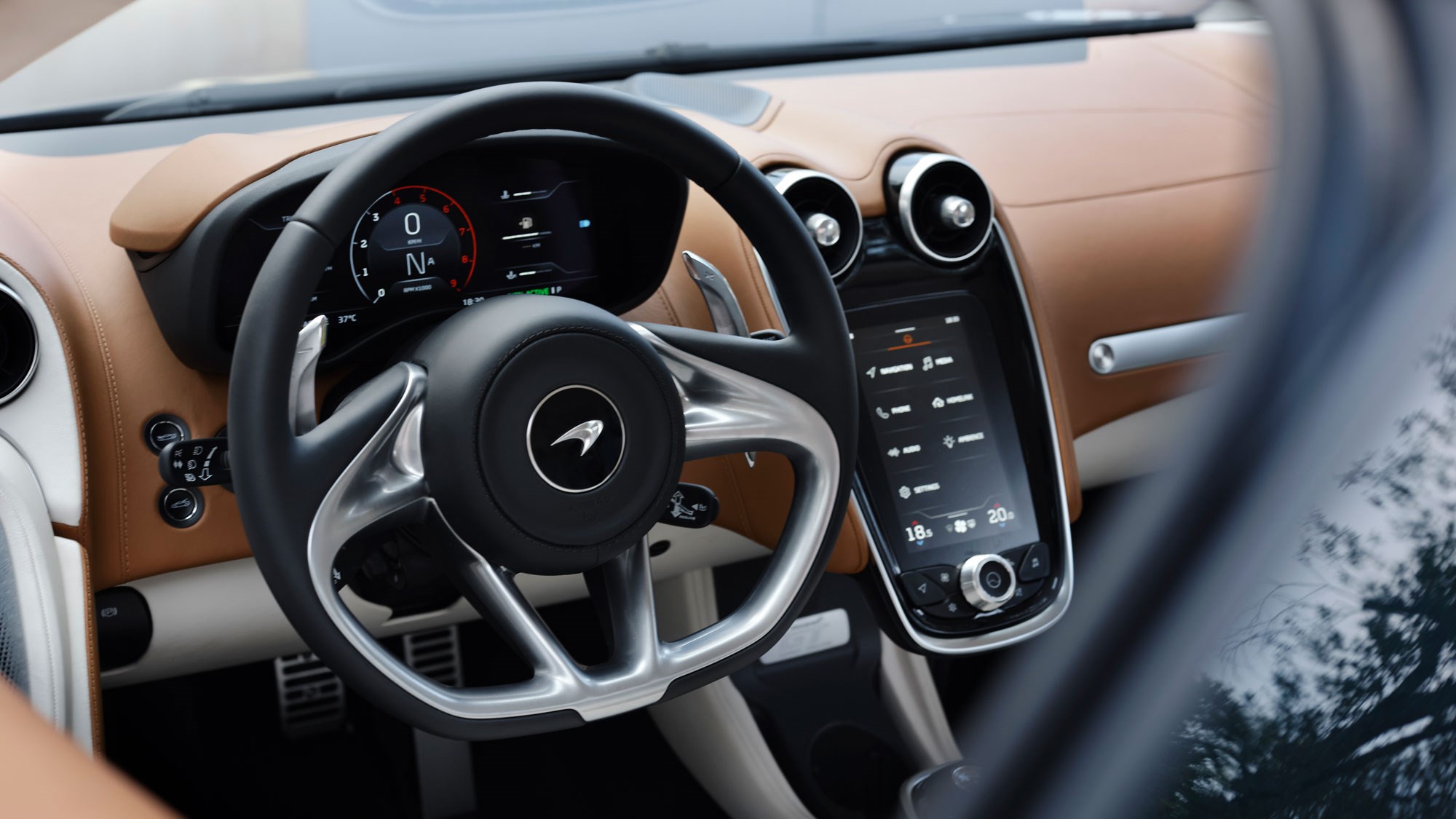
Not like the established Astons and Bentleys. But there are other super GTs that fit a similar profile – think Ferrari Roma and 911 Turbo. In their company, the GT is far less of an outlier. The GT, Roma, and 911 Turbo all possess proper sports car engines, usable rocket ship performance, sublime handling, and a few inevitable luxury, practicality, or refinement compromises. But it’s worth noting the GT has the most luggage space of the three by far.
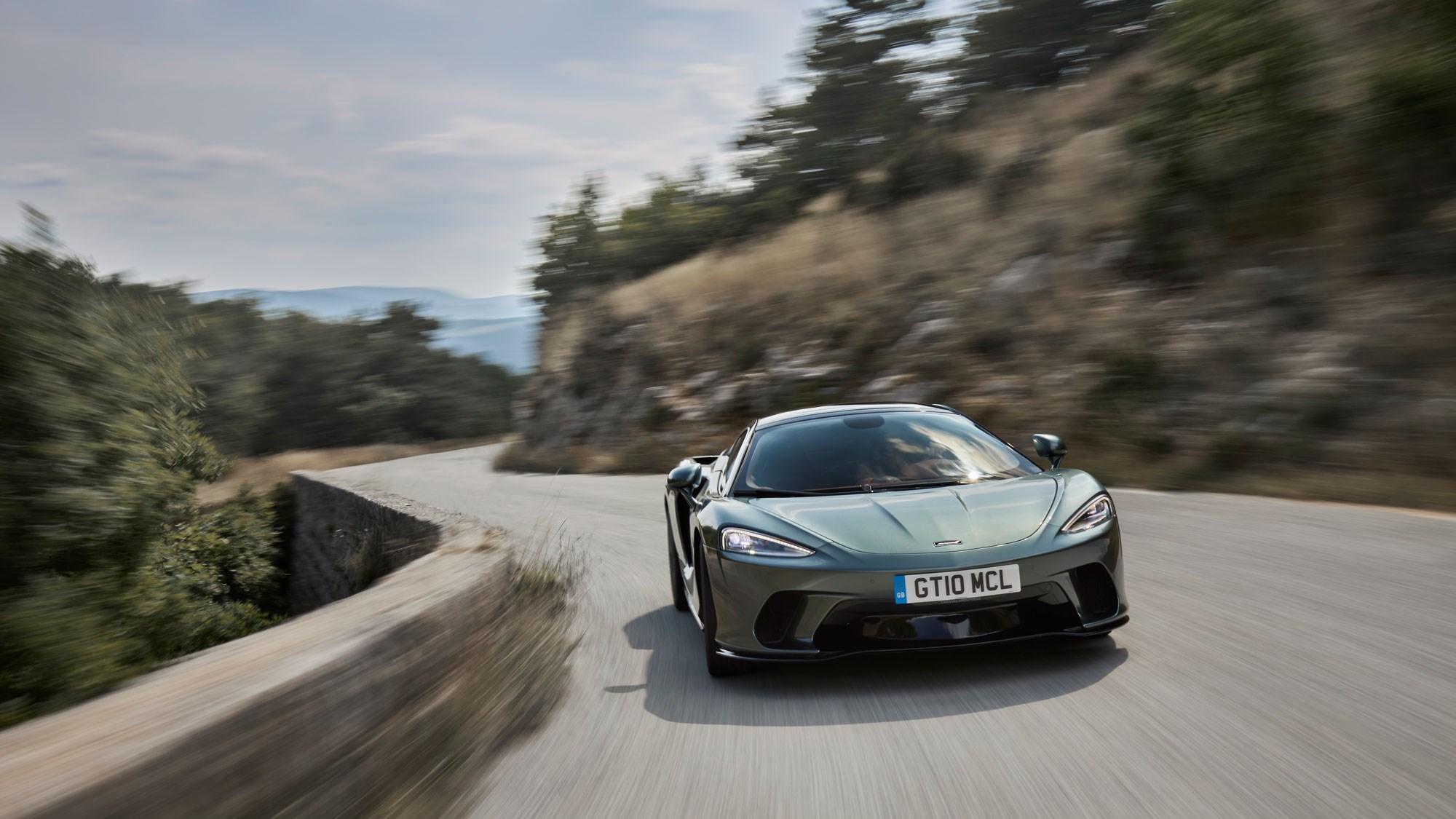
McLaren GT: verdict
If you want a mid-engined two-seater there are more exciting ones than this and McLaren makes some of them. Arrive at a track and you will immediately be pining for the bewitching 720S. And if you’re dead set on a big luxurious coupe like the Bentley Continental, it’s going to take a giant mental leap (and a smaller physical one over that door sill and under the dihedral door) to consider McLaren’s GT as an alternative.
But we like the GT. It’s quite different to all the other McLaren’s and certainly a better car than the old 570GT; it’s a well-sorted mid-engine monster specifically for the road rather than the track. The GT allows you to make the most of switchback roads without demanding you leave all your luggage behind, rendering a nudist camp as your only accommodation option.